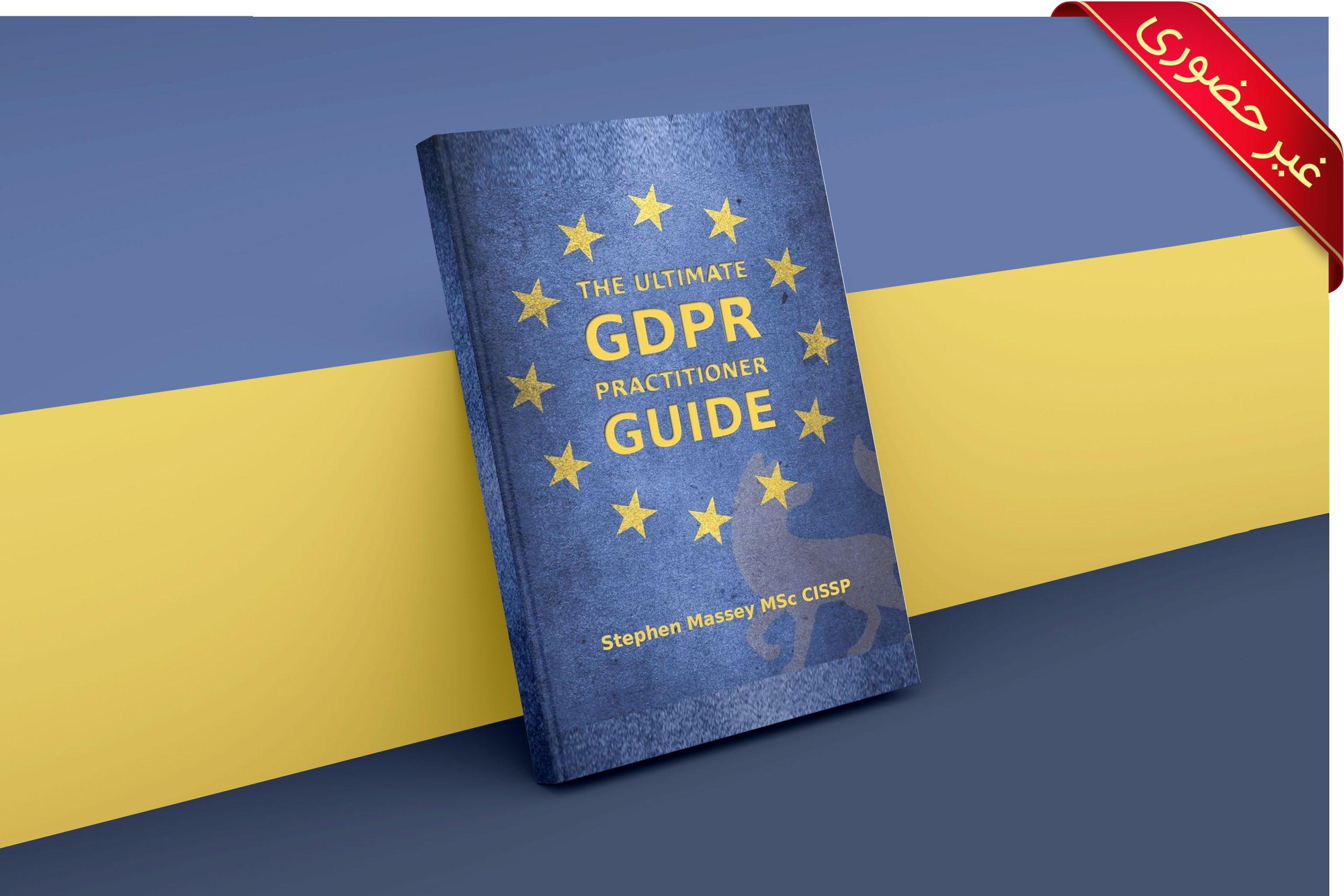شرکت دوره
به منظور ارسال درخواست ثبتنام، لطفا فرم زیر را با دقت تکمیل نمایید.
همکاران ما در اسرع وقت با شما تماس خواهند گرفت.


مقررات عمومی حفاظت از داده اتحادیه اروپا (The General Data Protection Regulation (GDPR) (EU) 2016/679) که در سال 2016 انشار یافت و از سال 2018 مورد اجرا قرار گرفته است، مقرراتی است که در مورد حفاظت از داده های عمومی و محرمانگی همه اشخاص و خروج داده در اتحادیه اروپا و منطقه اقتصادی اروپا مورد اشاره قرار می گیرد.. هدف این مقررات اساساً، برای اعطای شرایط کنترل داده ها به شهروندان و ساکنان این منطقه و سادهسازی محیط مقررات گذاری برای کسب و کارهای بینالمللی از طریق یکسانسازی مقررات است. اتحادیه اروپا در سالهای گذشته همواره قوانینی را برای حفظ حریم خصوصی و جلوگیری از سوءاستفادهی شرکتها از دادههای شخصی کاربران به تصویب رسانده است. حالا این قانون، دست شرکتها را برای سوءاستفاده از دادههای شهروندان اروپایی، تا حد زیادی میبندد. طبق این قانون، شهروندان اروپایی مالک دادههای خود هستند و شرکتهایی که این دادهها را جمعآوری میکنند، برای این دادهها از حق مالکیت بهره نمیبرند. طبق این قانون، شرکتها باید بدانند که چه اطلاعاتی را و چرا جمعآوری میکنند. همچنین آنان برای استفاده از دادههای شخصی کاربران، باید به زبان روشن و ساده از کاربران اروپایی خود اجازه بگیرند. علاوه بر این، کاربران میتوانند از شرکت موردنظر بخواهند که دادههای شخصی آنها را ارائه دهد و در صورت درخواست کاربران، شرکت مذکور باید توضیح دهد که چنین دادههایی در چه مواردی مورد استفاده قرار گرفته است. علاوه بر این، شرکتها باید دادههای جمعآوری شده از کاربران را هر چند وقت یکبار از بین ببرد.
مقررات عمومی حفاظت از داده اتحادیه اروپا (The General Data Protection Regulation (GDPR) (EU) 2016/679) که در سال 2016 انشار یافت و از سال 2018 مورد اجرا قرار گرفته است، مقرراتی است که در مورد حفاظت از داده های عمومی و محرمانگی همه اشخاص و خروج داده در اتحادیه اروپا و منطقه اقتصادی اروپا مورد اشاره قرار می گیرد.. هدف این مقررات اساساً، برای اعطای شرایط کنترل داده ها به شهروندان و ساکنان این منطقه و سادهسازی محیط مقررات گذاری برای کسب و کارهای بینالمللی از طریق یکسانسازی مقررات است. اتحادیه اروپا در سالهای گذشته همواره قوانینی را برای حفظ حریم خصوصی و جلوگیری از سوءاستفادهی شرکتها از دادههای شخصی کاربران به تصویب رسانده است. حالا این قانون، دست شرکتها را برای سوءاستفاده از دادههای شهروندان اروپایی، تا حد زیادی میبندد. طبق این قانون، شهروندان اروپایی مالک دادههای خود هستند و شرکتهایی که این دادهها را جمعآوری میکنند، برای این دادهها از حق مالکیت بهره نمیبرند. طبق این قانون، شرکتها باید بدانند که چه اطلاعاتی را و چرا جمعآوری میکنند. همچنین آنان برای استفاده از دادههای شخصی کاربران، باید به زبان روشن و ساده از کاربران اروپایی خود اجازه بگیرند. علاوه بر این، کاربران میتوانند از شرکت موردنظر بخواهند که دادههای شخصی آنها را ارائه دهد و در صورت درخواست کاربران، شرکت مذکور باید توضیح دهد که چنین دادههایی در چه مواردی مورد استفاده قرار گرفته است. علاوه بر این، شرکتها باید دادههای جمعآوری شده از کاربران را هر چند وقت یکبار از بین ببرد.
پیش نیاز ضروری برای این دوره ی آموزشی وجود ندارد.
Module 1: Introduction to the GDPR
Module 2: Binding Corporate Rules
Module 3: GDPR Terminology and Techniques
Module 4: Structure of the Regulation
Module 5: Principles and Rights
Module 6: Demonstrating Compliance
Module 7: Incident Response and Data Breaches
Module 8: Understanding the Principle Roles
Module 9: Role of the DPO
Module 10: Implementation
Module 11: Key Features
Module 12: Subject Access requests and How to Deal with them
به شرکت کنندگان در این دوره ی آموزشی گواهی حضور از سوی شرکت IT HOUSE اعطا خواهد شد.
تماس بگیرید
ندارد.
زمان باقیمانده جهت ثبتنام
آموزش، مشاوره و ارزیابی استانداردها، چارچوبها
و بهروشهای حوزه مدیریت فناوری اطلاعات
به منظور ارسال درخواست ثبتنام، لطفا فرم زیر را با دقت تکمیل نمایید.
همکاران ما در اسرع وقت با شما تماس خواهند گرفت.
